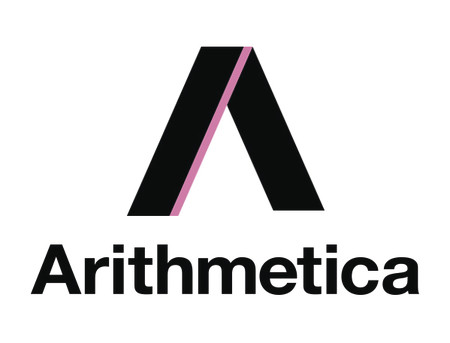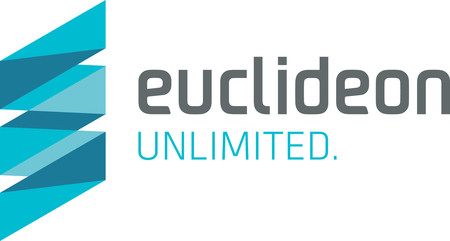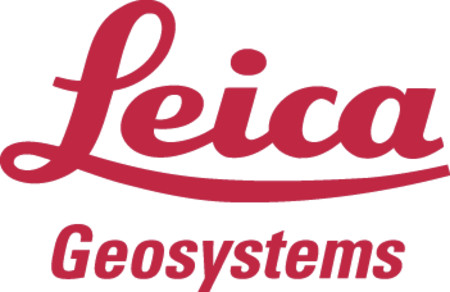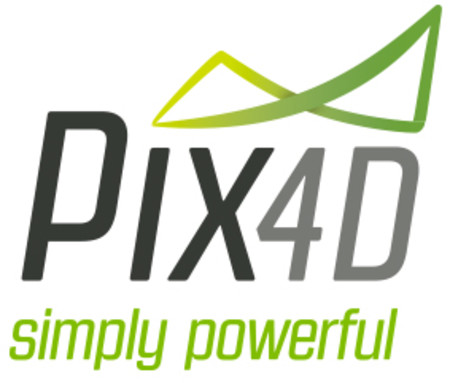It is less than a month until this year’s INTERGEO 2015 in Stuttgart. As every year the list of exhibitors is overwhelming with plenty of new companies amongst the big players in the geospatial business. Where to go and which booths to visit? It is definitely time to take a closer look at what is expecting us at this year’s INTERGEO.
Please keep in mind that Intergeo is huge and the range of applications is very wide – this article is written from a personal point-of-view and therefore mostly focusing on airborne data acquisition, data processing and geospatial applications.
A quick look to last year’s trends at INTERGEO
Last year’s key theme was definitely point clouds. Everything evolved about either creating point clouds or making point clouds useful to the end user.
On the data collection side we saw many new and innovative ways on how to collect point cloud data. Traditional laser scanner with improved performance, image-based point cloud generation software from airborne to close-range application and new small-sized sensors for UAV applications were shown across the exhibition.
The consumer side was faced with two approaches on how to handle geospatial data. For the traditional way of extracting vector data from point clouds, software manufacturers increased the amount of automation, accuracy and ease-of-use in their program suites. The alternative is maybe more a leap to the future where the user interacts directly with the point cloud data. Visualization, measurements and analysis take place by interacting within the 3-dimensional space whereas the data is either stored locally or then streamed through the local network or even over the internet.
What to expect at INTERGEO 2015
The focus this year will be on “Geospatial 4.0, the digital economy, transformation through digitisation, big data, the Internet of Things, digital infrastructures and smart cities”. For the GIS sector the challenge will definitely be to bring the big data information into the geospatial context. Same goes for the Internet of Things, where it no longer is only about connectivity, but also about spatial awareness. From a data provider point-of-view this means an increased need in geospatial data. Larger projects and more detailed processing will require software solutions to be more automated and more efficient.
Recommended booths to visit
Keeping the topic of this year’s INTERGEO in mind I went through the current list of exhibitors and tried to pick the most interesting booths (in alphabetical order):
 Arithmetica‘s prime product Pointfuse converts point cloud data to 3D vector models. It does so fully automatically and rapidly. Last year created some excitement as they announced the Free and Lite version of their software. Since then they released the update to version 1.1, which now let’s users created automatically created textured models and scaled ortho images.
Arithmetica‘s prime product Pointfuse converts point cloud data to 3D vector models. It does so fully automatically and rapidly. Last year created some excitement as they announced the Free and Lite version of their software. Since then they released the update to version 1.1, which now let’s users created automatically created textured models and scaled ortho images.
![]() GlobalMapper by Blue Marble Geographics is a popular and affordable GIS solution for viewing and manipulating geospatial data. Their LiDAR module is one of their optional add-ons, providing a range of LiDAR processing tools. Both the Global Mapper and the LiDAR module have been updated recently.
GlobalMapper by Blue Marble Geographics is a popular and affordable GIS solution for viewing and manipulating geospatial data. Their LiDAR module is one of their optional add-ons, providing a range of LiDAR processing tools. Both the Global Mapper and the LiDAR module have been updated recently.
- Read the press release of Global Mapper 16.2
- Read the press release of the latest update for the LiDAR module
 Last year Euclideon surprised me with their truly innovative approach of streaming LiDAR data to the client. Thinking about the future – where end users might (possibly) interact directly with point cloud data instead of vectorized information – this could well be an approach to manage, update and distribute point cloud data to the user. While we were able to see some indoor applications last year, I would like to see this year that they have found a way to work with airborne data as well.
Last year Euclideon surprised me with their truly innovative approach of streaming LiDAR data to the client. Thinking about the future – where end users might (possibly) interact directly with point cloud data instead of vectorized information – this could well be an approach to manage, update and distribute point cloud data to the user. While we were able to see some indoor applications last year, I would like to see this year that they have found a way to work with airborne data as well.
 IGI is known for their integration of different sensors. From laser scanner operating on different platforms to medium format cameras and thermal sensors. They create the tools for planning the missions, operating the sensors and processing the data.
IGI is known for their integration of different sensors. From laser scanner operating on different platforms to medium format cameras and thermal sensors. They create the tools for planning the missions, operating the sensors and processing the data.
![]() Another company that surprised me last year was imajing. Their mobile mapping solution is so compact and seems super easy to install and use. I’m definitely curious to see what new things they managed to incorporate into this small box.
Another company that surprised me last year was imajing. Their mobile mapping solution is so compact and seems super easy to install and use. I’m definitely curious to see what new things they managed to incorporate into this small box.
 Last year Leica Geosystems introduced the latest ADS100 – maybe this year it is time to take their LiDAR scanner line to the same number? Since the Intergeo in Berlin they also announced the new DMCIII. The new sensor has an astonishing 25’000 pixels across the swath – currently the world’s largest swath generated by a single frame. In terms of aerial surveying it is definitely also worth looking at their hydrographic equipment and maybe even the Aibotix products.
Last year Leica Geosystems introduced the latest ADS100 – maybe this year it is time to take their LiDAR scanner line to the same number? Since the Intergeo in Berlin they also announced the new DMCIII. The new sensor has an astonishing 25’000 pixels across the swath – currently the world’s largest swath generated by a single frame. In terms of aerial surveying it is definitely also worth looking at their hydrographic equipment and maybe even the Aibotix products.
Microsoft![]() is hard to ignore at INTERGEO – given that their Ultracam cameras are amongst the most popular sensors used for aerial photography. The Ultracam Eagle is still a capable and reliable work horse – could there be an announcement of a new sensor more powerful?
is hard to ignore at INTERGEO – given that their Ultracam cameras are amongst the most popular sensors used for aerial photography. The Ultracam Eagle is still a capable and reliable work horse – could there be an announcement of a new sensor more powerful?
![]() nFrames‘s high-performing software solution SURE is well-known amongst researchers for creating reliable dense point clouds from image matching. Furthermore the software allows to take these points and create detailed meshed surface which can then be used for visualizations or processing accurate true orthophotos. With strong ties to the Institute for Photogrammetry at the University in Stuttgart the nFrames-team continues to develop on the cutting edge of technology.
nFrames‘s high-performing software solution SURE is well-known amongst researchers for creating reliable dense point clouds from image matching. Furthermore the software allows to take these points and create detailed meshed surface which can then be used for visualizations or processing accurate true orthophotos. With strong ties to the Institute for Photogrammetry at the University in Stuttgart the nFrames-team continues to develop on the cutting edge of technology.
![]() Orbit Geospatial Technologies delivers solutions for Mobile Mapping, Unmanned Aerial Systems and Oblique Imaging. From desktop to web, simple to complex, low-end to high end – their flexible products might fit your need.
Orbit Geospatial Technologies delivers solutions for Mobile Mapping, Unmanned Aerial Systems and Oblique Imaging. From desktop to web, simple to complex, low-end to high end – their flexible products might fit your need.
- Orbit GT releases Mobile Mapping Feature Extraction portfolio v11.1
- Orbit GT releases Mobile Mapping Publisher v11.1
- Orbit GT releases Mobile Mapping Content Manager v11.1
 With the current publicity about the rising of UAVs, Pix4D is getting a lot of attention. Pix4D is definitely a userfriendly application that makes it easy to produce orthophotos and surface models – even as a non-surveyor. With their latest update user can now even process multi-spectral images and produce maps using common indices like NDVI.
With the current publicity about the rising of UAVs, Pix4D is getting a lot of attention. Pix4D is definitely a userfriendly application that makes it easy to produce orthophotos and surface models – even as a non-surveyor. With their latest update user can now even process multi-spectral images and produce maps using common indices like NDVI.
![]() Riegl‘s big announcement last year was their lightweight LiDAR scanner VUX-1 and the UAV RiCopter which went along. There is definitely a market for compact and light LiDAR sensor and it will be interesting to see how Riegl will develop towards this area.
Riegl‘s big announcement last year was their lightweight LiDAR scanner VUX-1 and the UAV RiCopter which went along. There is definitely a market for compact and light LiDAR sensor and it will be interesting to see how Riegl will develop towards this area.
![]() Teledyne Optech has had some interesting developments during the past months. First datasets of their multispectral airborne LiDAR sensor (Titan) being collected and I’m curious to see how much added-value the combination of different wavelengths produces. In the same time they also announced their PulseTRAK technologies which amonst other things allows the scanner to dynamically adjust the swath width following the terrain elevation. Reduced swath width variation can potentially reduce gaps and consequently the amount of flights needed to cover these gaps.
Teledyne Optech has had some interesting developments during the past months. First datasets of their multispectral airborne LiDAR sensor (Titan) being collected and I’m curious to see how much added-value the combination of different wavelengths produces. In the same time they also announced their PulseTRAK technologies which amonst other things allows the scanner to dynamically adjust the swath width following the terrain elevation. Reduced swath width variation can potentially reduce gaps and consequently the amount of flights needed to cover these gaps.
![]() If you work with LiDAR point clouds you most certainly are familiar with Terrasolid‘s wide range of LiDAR processing tools. They keep on improving their algorithms and introduced new additions during their user event at the beginning of the year.
If you work with LiDAR point clouds you most certainly are familiar with Terrasolid‘s wide range of LiDAR processing tools. They keep on improving their algorithms and introduced new additions during their user event at the beginning of the year.
![]() With the rise of virtual cities and 3D models, VirtualcitySystems is definitely a booth worth visiting during this year’s Intergeo. Their products cover everything related to 3D models, starting from data modelling and management to implementation of complex applications and publication of 2D/3D geo-information spaces.
With the rise of virtual cities and 3D models, VirtualcitySystems is definitely a booth worth visiting during this year’s Intergeo. Their products cover everything related to 3D models, starting from data modelling and management to implementation of complex applications and publication of 2D/3D geo-information spaces.
Summary
As one of the biggest trade fairs in the geospatial sector, INTERGEO is certainly worth visiting for anyone working in the fields of surveying, geoinformation or mapping. The sheer amount of exhibitors makes it necessary to properly prepare the trip. Also remember that besides the exhibitors there will be plenty of other companies attending the fair as a visitor…
Attracting the whole geospatial world, INTERGEO is probably the best place to meet your contacts – even if they are not going to have a booth. Now is the time to let them know and arrange a meet-up…
Did I miss something in my list? Are you roaming the floor at Intergeo as well? Let others know by adding your comment below…

Webmentions
[…] a week before the upcoming Intergeo, photogrammetry experts met in Stuttgart for the 55th Photogrammetric Week – or PhoWo (short […]